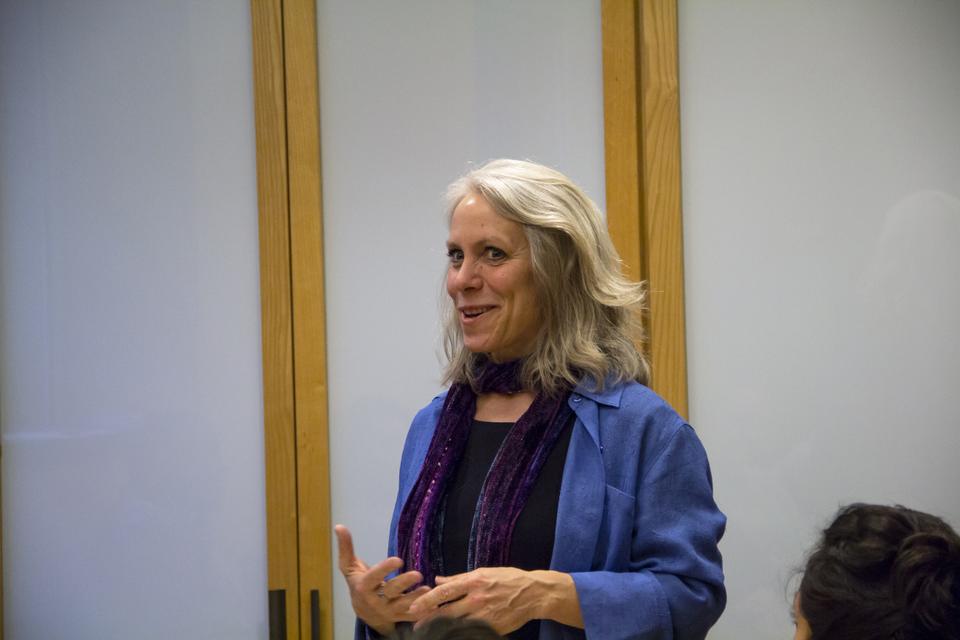
News
Nearly 200 Harvard Affiliates Rally on Widener Steps To Protest Arrest of Columbia Student

News
CPS Will Increase Staffing At Schools Receiving Kennedy-Longfellow Students

News
‘Feels Like Christmas’: Freshmen Revel in Annual Housing Day Festivities

News
Susan Wolf Delivers 2025 Mala Soloman Kamm Lecture in Ethics

News
Harvard Law School Students Pass Referendum Urging University To Divest From Israel
BGLTQ Activist Seeks To Dissolve Gender Binaries

Rather than being “entirely heterosexual” or “entirely homosexual,” one’s identity is dynamic and fluid, according to speaker and activist Robyn T. Ochs, who spoke at an interactive session called “Beyond Binaries” on Thursday.
During the session, Ochs discussed the importance of moving away from the simple homosexual-heterosexual categories, and emphasized the need to recognize the complexity of sexual identity.
“If we don’t fit neatly into existing categories, it means the categories are problematic, not us,” Ochs said.
Sharing her own experience in coming out as bisexual, Ochs pointed out the lack of acceptance of nontraditional identities.
“I felt like to say anything was stepping off a cliff into the unknown,” Ochs said.
After identifying some shortcomings in previous research that attempted to graph sexual orientation, Ochs designed a new model that demonstrates how sexual identities are fluid and changing.
The audience members engaged in a group activity that involved a more flexible and inclusive way of visually portraying sexual identities.
Ochs first had them fill out an anonymous survey that numerically portrayed their sexual orientation and attractions.
After receiving someone else’s survey, participants stood on a spectrum from 0 to 6, with 0 being entirely heterosexual and 6 being entirely homosexual.
Ochs emphasized that her model was a continuum, not just a scale, and that there was space outside the continuum for those who did not feel they fit the survey.
Heidi M. Hurst ’15, who participated in the session, said that she thought this way of portraying identity was insightful, and it was “validating that people conceive gender in so many different ways.”
“It gave me a healthy dose of appreciation for nuance when trying to portray someone’s identity,” Hurst said.
Edith C. Benavides ’14, an intern who also organized the event, said she thought the session provided a supportive environment for participants by creating the “right amount of comfort and discomfort.”
“A little bit of community was created,” Benavides said.
Want to keep up with breaking news? Subscribe to our email newsletter.
From Our Advertisers

Over 300+ courses at prestigious colleges and universities in the US and UK are at your disposal.

With innovative financial tools combined with financial education, Collegiate empowers students to take control of their finances and build confidence in their money management skills.

Serve as a proctor for Harvard Summer School (HSS) students, either in the Secondary School Program (SSP), General Program (GP), or Pre-College Program.

With an increasingly competitive Law School admissions process, it's important to understand what makes an applicant stand out.

Welcome to your one-stop gifting destination for men and women—it's like your neighborhood holiday shop, but way cooler.

Admit Expert is a premium MBA admissions consulting company, helping candidates secure admission to top B-schools across the globe with significant scholarships.
